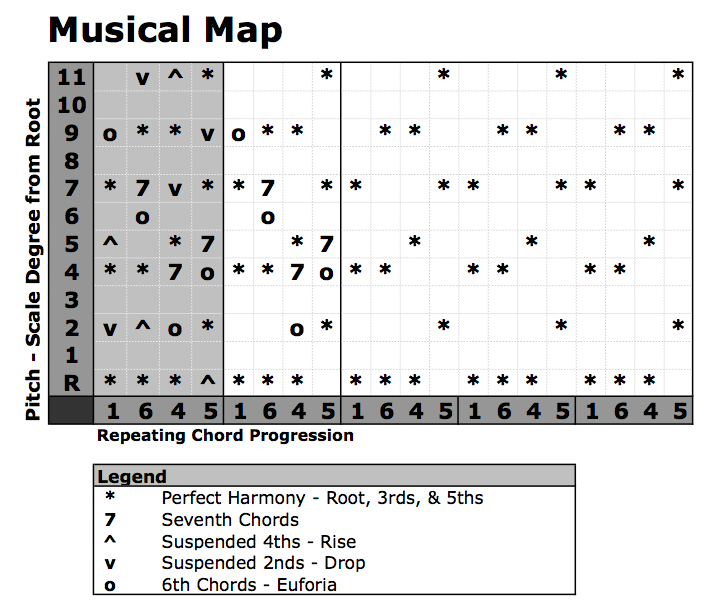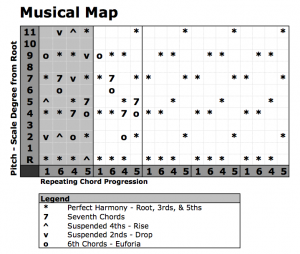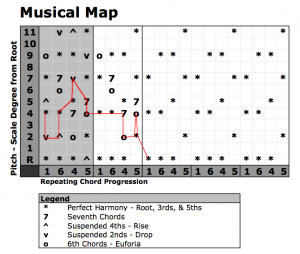Music Theory Lesson – Progressions #3

When playing a melody, there are many positions you can start from. Each starting point has a different feeling on the entire melody segment. While you can start anywhere, it’s best to start on a harmonizing note; even better if the harmonizing notes are different. Usually the starting point is dictated by where you left off in the last melody segment.
Music Theory Lessons
Root Position
If u start on the root, you get a standard neutral melody with nothing special. It’s a good starting point for the very beginning of a song because nothing is established yet. Something you can do is start from the 5th from the octave below. This creates a starter jump note to start the melody with a little propulsion.
3rd Position
Starting on the 3rd is a great place to start when you want to jump into the middle of the melody. This is usually a fail safe starting point for any melody because it’s in the middle and its harmony is different from the root. From this point you can either increase the energy by moving up the spectrum, or decrease or maintain by moving down the spectrum.
5th Position
Starting from the 5th starts the melody off with power, conflict, and close to resolution. No matter whether you go up or down on the spectrum, it’s going to resolve. Just going up or down decides how it’s going to resolve, whether that be high or low energy, happy or sad, etc. etc.
Musical Map
 This chart shows all the different positions and how they transition to one another. Obviously this musical map has many paths and choices, so there isn’t any real right route. Which means it’s up to the composer which path they take. It can be short and sweet, or long, complicated, and adventurous. It’s up to you. All this map does, is tell where you are in relation to everything else and what’s coming up on the chord progression highway.
This chart shows all the different positions and how they transition to one another. Obviously this musical map has many paths and choices, so there isn’t any real right route. Which means it’s up to the composer which path they take. It can be short and sweet, or long, complicated, and adventurous. It’s up to you. All this map does, is tell where you are in relation to everything else and what’s coming up on the chord progression highway.
While it’s not hard to come up with a melody, I feel like this tool helps with the components & emotion of the melody. A strategically planned melody can appeal to a listener more when there is an emotional connection involved. Getting the right tones matched up with the correct emotion is specifically important, especially if your music is to sync up with a movie.
How to Use the Map
 Start at any position in the first column. Move as little or as much, just don’t skip too many at a time and abide by the Key Signature’s Beats per Measure. When choosing your path, also know the Map Legend, so you know what kind of tone your going to encounter.
Start at any position in the first column. Move as little or as much, just don’t skip too many at a time and abide by the Key Signature’s Beats per Measure. When choosing your path, also know the Map Legend, so you know what kind of tone your going to encounter.
The progression on the chart repeats over and over again and it’s exactly the same. I only added ALL the symbols on the first segments so the entire chart wasn’t cluttered.
The best way to become a great composer, is constantly explore new sounds and chord changes. Hearing a simple obscure chord change could be all it takes to write a huge multi-piece compilation.
So keep practicing and exploring. Make up different melodies and jingles starting from different Roots. Eventually you’ll see one giant scale, instead of many keys.
Until next time,
ZaBorski
It’s actually a nice and helpful piece of information. I’m happy that you just shared this helpful information with us. Please stay up to date like this. Thanks for sharing.